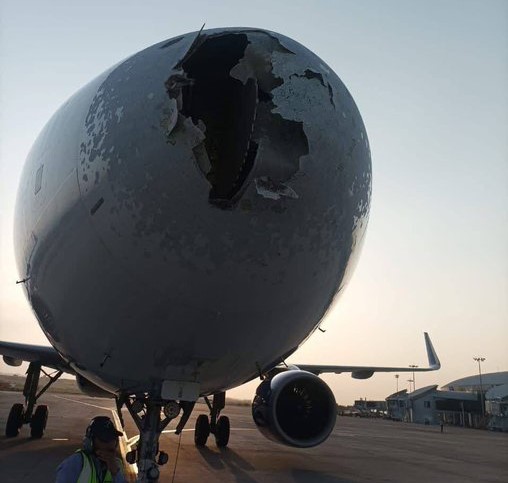An IndiGo flight traveling from Delhi to Srinagar on Wednesday faced a terrifying ordeal in the skies as it encountered a severe thunderstorm near Pathankot, resulting in heavy turbulence and hailstorm damage. The crew made multiple distress calls and attempted to divert into Pakistani airspace to avoid the extreme weather but were denied clearance, according to the Directorate General of Civil Aviation (DGCA)
PAN-PAN Alert Declared Amid Turbulence
The IndiGo flight, 6E 2142, operated by an Airbus A321 Neo (VT-IMD), was cruising at 36,000 feet when it hit a violent storm. With flight systems disrupted and autopilot disengaged, the pilot declared a PAN-PAN emergency—a signal used for urgent situations that require immediate attention, though not as critical as a mayday call.
Pilots Denied Airspace Clearance by Both India and Pakistan
The DGCA revealed that the crew had initially requested Northern Control, managed by the Indian Air Force (IAF), for permission to deviate left toward the International Border to bypass the storm. This request was not approved.
Desperate for an alternative, the pilots then contacted Lahore ATC in Pakistan to enter their airspace—but that request too was denied, leaving the crew with no option but to fly through the storm.
Manual Flying in Dangerous Conditions
As the aircraft attempted to escape the storm, it encountered intense updrafts and downdrafts, which led to multiple critical system alerts. According to the DGCA, the plane suffered:
- Disconnection of autopilot
- Warnings for unreliable speed
- Stall warnings
- Loss of system protections
At one point, the rate of descent reached 8,500 feet per minute, a dangerously fast drop. The crew manually flew the aircraft until they successfully exited the hailstorm.
ALSO READ: Ambala Travel Guide: Top Places to Visit & Foods to Try in Haryana’s Historic City
Safe Landing in Srinagar, No Injuries Reported
After regaining control and completing all emergency procedures, the pilots requested RADAR vectors from Srinagar ATC, which guided them for a safe landing. The DGCA confirmed that no passengers were injured.
A post-flight inspection revealed visible damage to the aircraft’s nose, likely caused by the hailstorm.
Investigation Underway
The DGCA has launched a formal investigation into the incident, including the refusal of airspace access by both Indian and Pakistani authorities during a critical emergency situation.
















































